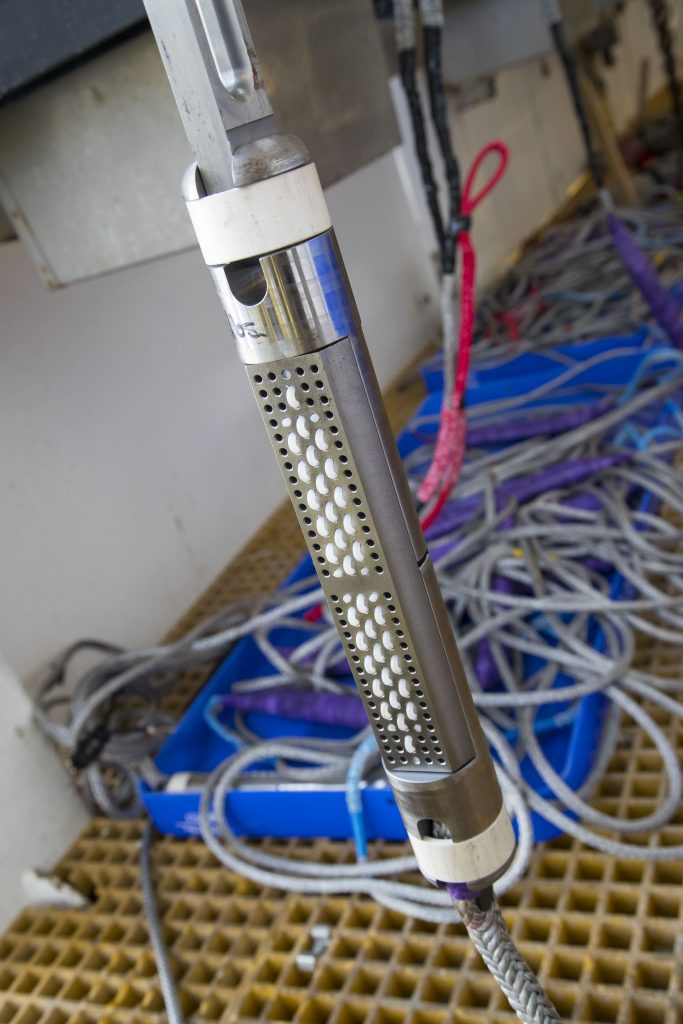
Watch ‘Old meets New’ – how we used the ‘lost art’ of rope splicing in our high-tech subseafloor observatory
Watch Patrick Fulton explain how he learnt the ‘lost art’ of rope splicing to connect the chemistry instrument (‘ososampler’) and temperature sensors to ‘weak links’.
The rope splicing allowed us to adjust the length of each instrument package to sit at exactly the right depths in the fault zone (below, within and above the fault), which we had found out from coring the borehole just days beforehand. The rope was 401 meters long, so Patrick spent many hours calculating the strength and length the rope and separate splices had to be.
Patrick is an Assistant Professor at Texas A&M University (earthquake physics, geophysics, hydrogeology) and is an Observatory specialist on Expedition 375.